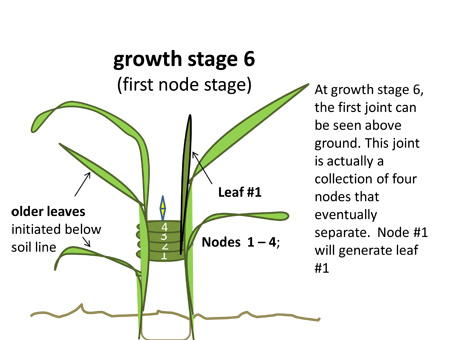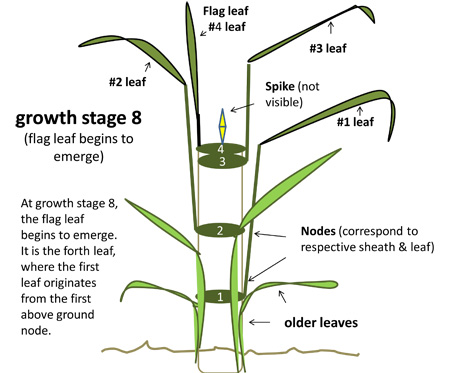Flag leaf emergence in winter wheat
Protecting the flag leaf is critical to attaining high yields. The vigil starts as soon as growers are able to recognize when the flag begins to emerge.
A critical stage in the development of wheat plants is the emergence of the final leaf called the flag leaf. At this point the emphasis of management needs to shift to its protection as the flag leaf is critical for attaining high grain yields.
To protect the crop’s flag leaves within a field, growers should monitor their fields to watch for the development of various leaf diseases. Also, within a couple weeks growers will need to start watching for armyworms, as they sometimes demonstrate a voracious appetite for wheat leaves.
Growers also need to be careful to avoid damaging the flag leaf once it emerges. For example, late applications of fertilizer nitrogen or oil based pesticides can potentially burn the leaf tissue compromising its ability to support grain fill.
When the tip of the flag leaf begins to emerge, the shoot is said to be at Feekes growth stage 8. To determine if an emerging leaf is in fact the flag leaf, one should first identify the leaf and sheath that is attached to the first node near the base of the shoot. Calling this leaf #1 and counting upward, the flag leave will be leaf #4. If only # 1, 2 and 3 leaves are visible, the shoot is still at growth stage 7 and the flag leaf is still hidden within the sheath column. The diagrams of growth stages 6 and 8 attempt to illustrate the relationship between nodes and leaves, and how this can be used to help identify the flag leaf.

Growth stage 6

Growth Stage 8
Additional information about wheat growth stages:
Managing Wheat by Growth Stage (Purdue University)
Wheat Growth Stage Development (University of Illinois)



 Print
Print Email
Email